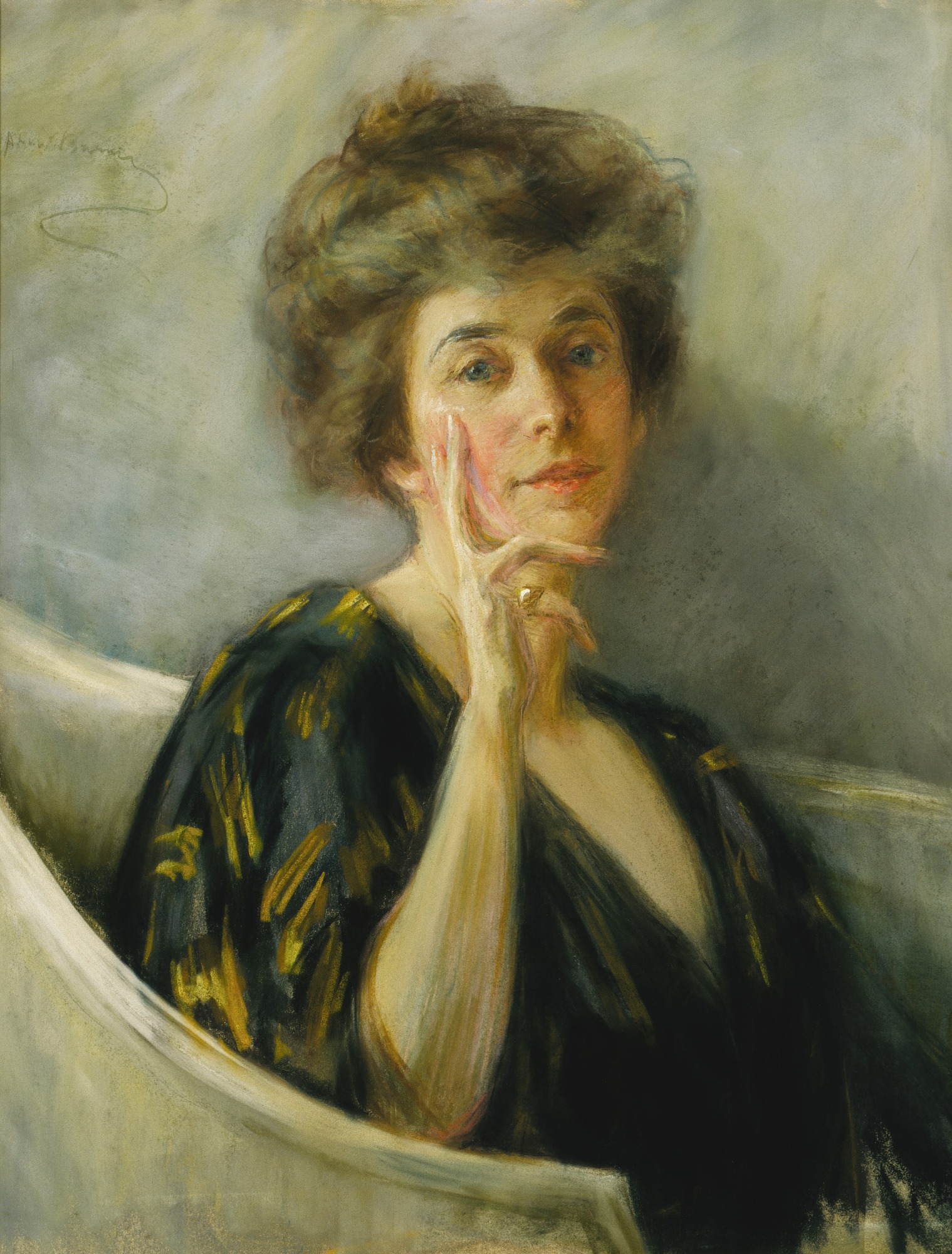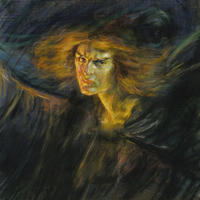More about Alice Pike Barney
Works by Alice Pike Barney

Contributor
Alice Pike Barney was born a few years before the Civil War and lived until just after the Great Depression.
These were times of revolutionary technological, scientific, aesthetic, musical, and political innovation in the United States, but they were also cataclysmic and full of tragedy. In particular, the role of women was both bolstered, among "whites," by suffrage, and heavily dishonored by the prevailing model of gender relations, which was, and is, based on the supposedly decisive role of the individual man, rather than the already-existing kinship networks which include matriarchal and patriarchal forces working in harmony.
Therefore, although Barney was a great painter surrounded by influential artists and poets, few writers today attend to her, and scholarly literature on her is rare. However, stories about her two daughters are much more available.
The year of her birth, her father, Samuel Naftali Pike, a German Jew who owned the Magnolia brand whiskey-distilling fortune, opened Pike's Opera House, the home of the first Cincinnati Philharmonic, with $500,000. By eighteen years of age, Alice was married and at twenty-two, with her six-year-old daughter Natalie, she met Oscar Wilde on a beach and he convinced her to pursue art as a career. Her husband could not understand this, given that she was an heiress and therefore had no need to work. Her decision to make art was completely contrary to her supposed economic self-interest. In the mind of her husband, her art could only represent a risk.
When the Barneys met Oscar Wilde, Barney's other daughter Laura was only two years old. When Laura Barney converted to the infant Bahá'í Faith around 1900, her mother followed her. Laura Barney would author one of the classic texts of the faith, "Some Answered Questions."
The elder daughter Natalie became a Parisian expatriate and Left Bank salonist. During her mother and sister's conversion experiences, Natalie made the incredibly bold, risky decision to publish love poems to women. She was also a vocal pacifist and a feminist. Unfortunately, she swallowed whole the Axis propaganda filling the airwaves of wartime Paris and, her biographer writes, held loyalties to "Hitler and Mussolini…[due to a] confused sense that tradition, artistic expression and personal freedom must prevail over the communist threat." Gertrude Stein also endorsed fascists, which some biographers have argued was a sly ploy to survive as a Jew in occupied France (throw-off tactics, to quote E-40). Hannah Arendt, also a Jew, had liaisons with the most famous philosopher, and the most famous Nazi philosopher, of the century, Heidegger. Karlfried Graf Durckheim, a nobleman, was already knee-deep in the Nazi upper echelons before learning he was a Jew himself. Nonetheless, these are unusual cases, and Natalie's views require a second look. They were, in part, the result of propaganda which taught--and teaches--that because the origins of the Ashkenazi Jews in Europe are not well documented, and because so many find an alliance with civil rights and justice movements, that Jews are not "white," as if such a thing were scientific, and that Jews therefore are poised to threaten the advancement of Civilization.
Unlike Natalie, Laura and Alice Barney found a strand of Abrahamic monotheism that grew from a Persian environment, in part, because they saw that their own intellectual heritage and that of the Persians were linked, and because, as people of a liberal mindset, they appreciated the Bahá'í idea of the oneness of religions.
Sources
- Dorf, Samuel N. Performing Antiquity: Ancient Greek Music and Dance from Paris to Delphi, 1890-1930. Oxford: Oxford University Press, 2018.
- Engelken, Ruth. "Alice -- The Talented One." Cincinnati Magazine, March 1979, 38-41.
- Heller, Jules and Nancy G. Heller. North American Women Artists of the Twentieth Century: A Biographical Dictionary. London: Routledge, 2013.
- Livia, Anna. A Perilous Advantage: The Best of Natalie Clifford Barney. Hereford, AZ: New Victoria Publishers, 1992.
- Rodriguez, Suzanne. Wild Heart: A Life: Natalie Clifford Barney's Journey from Victorian America to the Literary Salons of Paris. New York: HarperCollins, 2002.
- Secrest, Meryle. Between Me and Life: A Biography of Romaine Brooks. New York: Knopf Doubleday, 1974.
Featured Content
Here is what Wikipedia says about Alice Pike Barney
Alice Pike Barney (born Alice Pike; 1857–1931) was an American painter. She was active in Washington, D.C., and worked to make Washington into a center of the arts. Her two daughters were the writer and salon hostess Natalie Clifford Barney and the Baháʼí writer Laura Clifford Barney.
Check out the full Wikipedia article about Alice Pike Barney











